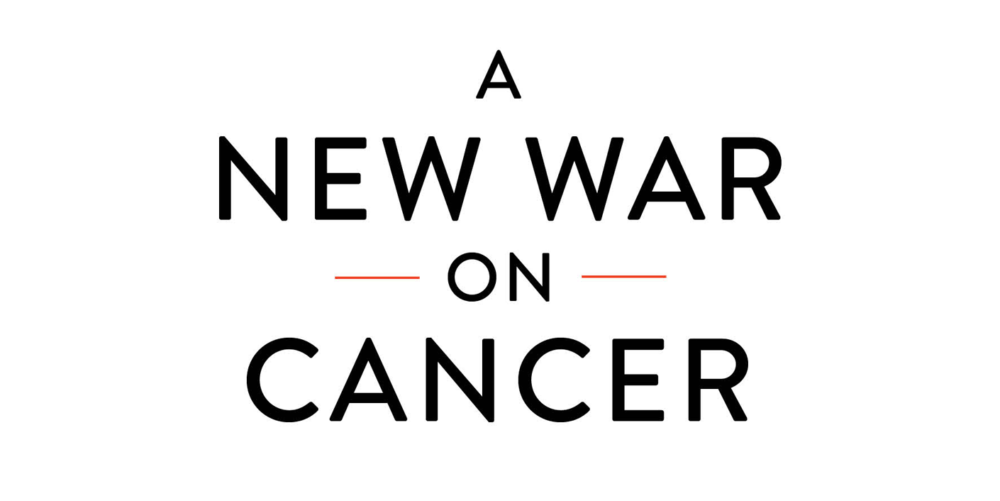“A New War on Cancer” Focuses on Prevention, Especially for Children
Posted by admin on

Written by Diane MacEachern

Kids shouldn’t get cancer. It’s wrong and unfair, let alone heartbreaking. Even so, childhood cancer rates are on the rise. Childhood leukemia cases in the US have increased 35% and rates of childhood brain cancer have gone up 33% since researchers started tracking the disease in the early 1970s. In fact, as hard as it is to fathom, cancer rates for children and teens across America have ballooned to the point that one in every 285 American children receives a cancer diagnosis before the age of twenty.
Why is this happening? More to the point, why is it being allowed to happen?
Scientific evidence suggests that it’s happening because kids are increasingly being exposed to toxic chemicals in our air, water, and everyday products like toys, stain-resistant clothing, personal care and cleaning products, and food containers. It’s being allowed to happen, environmental health journalist Kristina Marusic explains, because not enough emphasis is being put on preventing childhood exposures to these chemicals. Exposures will continue, she declares, unless initiatives like the Biden Administration’s proposed “Cancer Moonshot” focus as much on preventing cancer as they do on curing it.
In her new book A New War on Cancer; The Unlikely Heroes Revolutionizing Prevention, Marusic says that only 7%-9% of all global funding in the cancer arena goes toward prevention.
“If the “war” was an actual military conflict,” she points out, “this would be like spending 93% of our resources to treat wounded soldiers and civilians, and spending only 7% on offensive or defensive measures that could prevent them from getting hurt in the first place.”
While Marusic acknowledges that it’s difficult to draw a direct line between any one chemical and a particular cancer, she says a “growing body of research” links a broad class of chemicals known as “endocrine disruptors” to a multitude of hormone-related cancers, including multiple myeloma, testicular cancer, breast cancer, and other diseases that stem from an immune system compromised by toxic compounds.
And yet, efforts to regulate endocrine disrupting chemicals have been woefully inadequate. “Since the dawn of the chemical era in the early twentieth century,” writes renowned pediatrician Dr. Philip J. Landrigan in the book’s forward, “more than 300,000 new chemicals have been invented. But unlike prescription drugs and vaccines, which are carefully screened for safety, most widely used chemicals have never been tested for safety or toxicity, and fewer than 20% have ever been examined for their potential to harm fetuses, infants, and children. “Chemical policy in this country is broken.”
Marusic shows readers just how broken the policies are by recounting the heroic stories of American women who have devoted their lives to preventing cancers caused by pollutants and toxins. They include an Indian American researcher fighting racial injustice in toxic cosmetics; a Nigerian American children’s health advocate working to make daycare centers and playgrounds safer; a California-based lawyer advocating for carcinogen-free buildings; and a Pennsylvania woman fighting to defend her community from the toxic pollution generated by a steel plant.
Marusic tells her own story, too. Her father contracted brain cancer. Her younger sister was diagnosed with thyroid cancer when she was twenty-five. Her husband has a rare autoimmune disorder, while some of his family members have also been treated for cancer. The common thread? They all grew up in Pittsburgh, an area grappling with persistent air pollution and an industrial past that has tainted the local environment.
Marusic outlines a number of steps we can take to protect ourselves and our families from cancer-causing chemicals while we push for the big policy changes that are needed. For example:
- When buying new skincare, hair products, makeup, or household cleaning products, many of which commonly consist of phthalates, parabens, and synthetic fragrances, use a tool like the Environmental Working Group’s Healthy Living App to pick nontoxic upgrades.
- Eat organic food whenever possible to reduce your exposure to cancer-causing pesticides.
- Use a high-quality water filter at home, like a Zero filter.Avoid strenuous exercise outdoors on poor air quality days to avoid inhaling toxic air pollutants.
- Run an air purifier at home periodically, particularly on poor air quality days.
HEPA purifiers are best but can be expensive; you can create a low-cost version by fitting a HEPA filter into a box fan. - Tap into the Healthy Building Network to source safer materials for your next home renovation project. Encourage your school or workplace to do the same.
Choose a daycare that’s been endorsed as nontoxic by a third-party program like the Eco-Healthy Child Care certification or encourage your existing daycare to get certified. - Encourage your local schools to minimize kids’ harmful exposures by using resources like the EPA’s Healthy Schools Checklist.
Just as importantly, don’t let chemical manufacturers and public policy makers off the hook. “The root causes of this chemical crisis are the repeated failure of chemical manufacturers to take responsibility for the materials they produce and the systematic failure of governments…to regulate toxic chemicals,” declares Dr. Landrigan.
Pressure companies in the marketplace by buying healthier, safer products when you shop. But that will be for naught unless you contact your local, state and elected officials to demand they make the “moonshot” a “sure shot” and start getting toxic chemicals out of our world.
I highly recommend this book.
TELL EPA: PROTECT PEOPLE FROM TOXIC AIR POLLUTION RELEASED IN PLASTICS AND CHEMICAL MANUFACTURING
